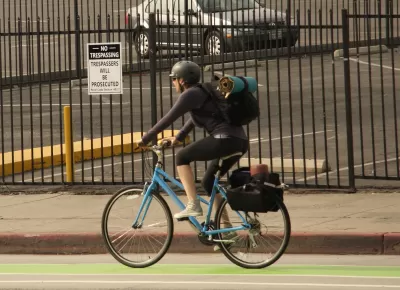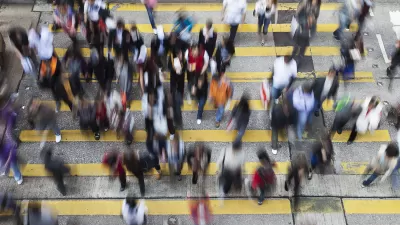The city has seen a rise in car crash deaths since implementing its Vision Zero initiative. Advocates say not enough action is being taken to make streets safer.

More than three years ago Los Angeles adopted a Vision Zero strategy, part of a global initiative to make streets safer and eliminate traffic fatalities. "But rather than decline, fatal car crashes have risen 32% since 2015, the year Vision Zero began. In that time, more people have died in traffic collisions — 932 — than were shot to death in the city, according to coroner’s data," reports Laura J. Nelson.
City officials say they have been analyzing crash data, identifying dangerous streets and intersections, and making changes, including adjusting signal timing, painting crosswalks, and installing posts to slow down vehicles. Additional larger projects involve new signals, sidewalks, and protected bike lanes.
"But Vision Zero has not reduced fatalities enough to meet its early benchmarks, including the 20% reduction in deaths that the city should have achieved in 2017. Without a greater sense of urgency among drivers and elected officials, advocates say, Los Angeles will not come close to eliminating traffic deaths by 2025," notes Nelson.
FULL STORY: More people are dying on L.A.’s streets despite a push to eliminate traffic fatalities

Maui's Vacation Rental Debate Turns Ugly
Verbal attacks, misinformation campaigns and fistfights plague a high-stakes debate to convert thousands of vacation rentals into long-term housing.

Planetizen Federal Action Tracker
A weekly monitor of how Trump’s orders and actions are impacting planners and planning in America.

In Urban Planning, AI Prompting Could be the New Design Thinking
Creativity has long been key to great urban design. What if we see AI as our new creative partner?

King County Supportive Housing Program Offers Hope for Unhoused Residents
The county is taking a ‘Housing First’ approach that prioritizes getting people into housing, then offering wraparound supportive services.

Researchers Use AI to Get Clearer Picture of US Housing
Analysts are using artificial intelligence to supercharge their research by allowing them to comb through data faster. Though these AI tools can be error prone, they save time and housing researchers are optimistic about the future.

Making Shared Micromobility More Inclusive
Cities and shared mobility system operators can do more to include people with disabilities in planning and operations, per a new report.
Urban Design for Planners 1: Software Tools
This six-course series explores essential urban design concepts using open source software and equips planners with the tools they need to participate fully in the urban design process.
Planning for Universal Design
Learn the tools for implementing Universal Design in planning regulations.
planning NEXT
Appalachian Highlands Housing Partners
Mpact (founded as Rail~Volution)
City of Camden Redevelopment Agency
City of Astoria
City of Portland
City of Laramie




























